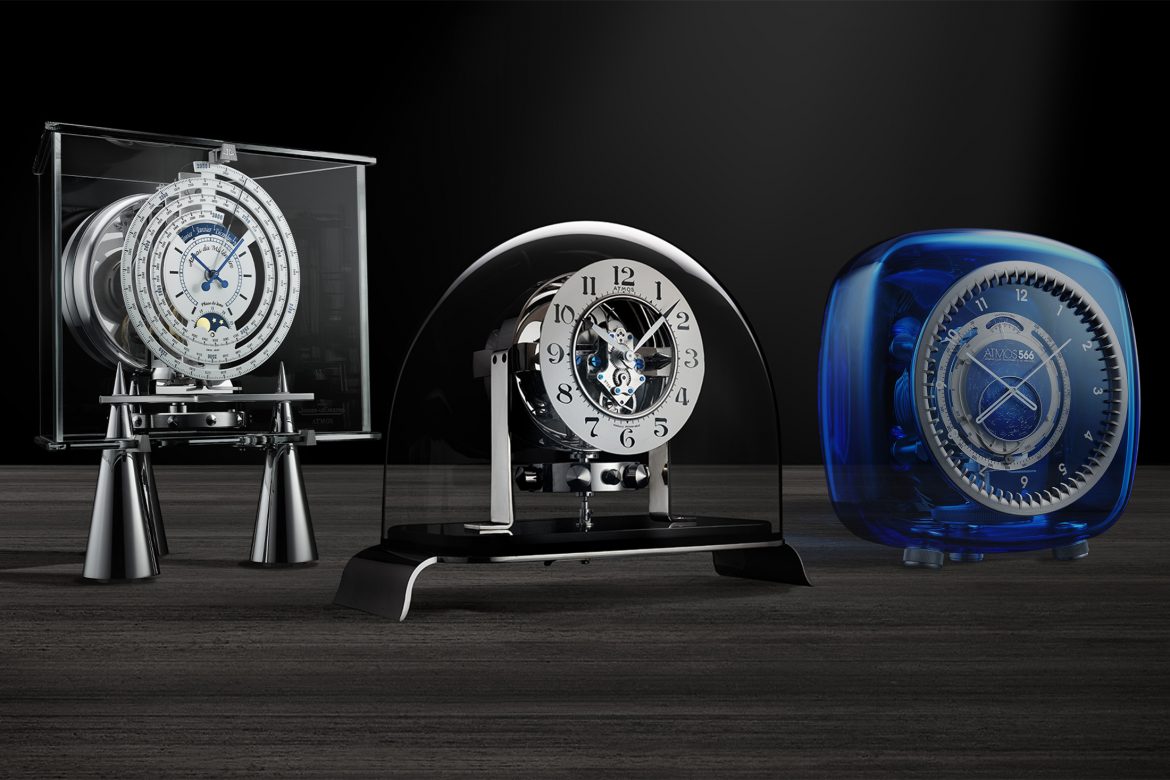Living off thin air, the Jaeger-LeCoultre Atmos Clock is a work of wonder.
It reads like an eternal riddle: I do not eat; I do not drink. Give me air, and I will live forever. What am I?
Ask any horological enthusiast, and they will probably tell you the answer is the Jaeger-LeCoultre Atmos Clock – only the single best-known clock in the world, and the closest humankind has ever come to creating a perpetual motion machine.
Running on Air
 The very first iteration of the Atmos Clock was first invented in 1928 by Jean-Léon Reutter, a Neuchâtel-born radiological engineer, who introduced a prototype clock which had no need for batteries, electricity, routine rewinding or any external intervention to keep going.
The very first iteration of the Atmos Clock was first invented in 1928 by Jean-Léon Reutter, a Neuchâtel-born radiological engineer, who introduced a prototype clock which had no need for batteries, electricity, routine rewinding or any external intervention to keep going.
The magic in the machinery is driven by the principle that the energy required to power the clock is supplied by normal, everyday fluctuations in air temperature. Thermal energy is transformed into mechanical energy, which drives the movement of the balance.
Though straightforward, the mechanical device to enable this movement was extremely complex to engineer. The secret lies in a hermetically sealed, gas-filled capsule, which is connected to the clock’s drive spring by a membrane. The slightest temperature variation changes the volume of the gas, causing the membrane to expand and contract – ‘breathing’ like the bellows of an accordion – thus winding the spring. A change of just one degree Celsius can power the clock for 48 hours.
Watchmaking Wizardry
Though undoubtedly a thing of great beauty and a feat of exceptional engineering, the original Atmos Clock failed to launch successfully when it was introduced to the public in 1930, due to a number of technical issues.
It was only when Jacques-David LeCoultre, who was deeply fascinated by the extraordinary machine, bought it and worked together with Reutter to entirely redesign key components, that new Calibre 519 was born; and the Atmos II was ready for commercialisation in 1939.

Birth of an Icon
Since then, the Jaeger-LeCoultre Atmos Clock has become a true icon in the world of luxury watchmaking, and has been the perfect showcase for the Maison’s technical mastery and exceptional craftsmanship of the Atelier des Métiers Rares. Nicknamed the “President’s Clock,” the Atmos Clock was the official gift of the Swiss Confederation in 1950.
Originally housed in a “glass dome” cabinet, the Atmos Clock has retained its design signature of airy delicacy, offering windows into the complexity of its mechanism from every angle. The timeless Art Deco lines and perfect balance of the rectilinear design of the Atmos II cabinets have ensured the status of this “glass box” as the classic form.
Design Evolution
Through collaborations and artistic reinterpretations, the Atmos Clock has also offered a canvas to showcase new ideas. Since the 1970s, Jaeger-LeCoultre has worked with a series of talented designers and specialised craftsmen to produce special editions of the Atmos, notably those that incorporate astronomical complications.
Among some outstanding examples are the futuristic Atmos du Millénaire Atlantis, created in 1999 to celebrate the new millennium; the Atmos 566 by Marc Newson, encased in a cube of hand-made Baccarat crystal, within which the mechanism appears to float weightlessly; and the sumptuous Atmos Marqueterie “Le Baiser” of 2012, enclosed in a cabinet of rare woods with an exquisitely detailed wood marquetry rendition of Gustav Klimt’s painting “The Kiss”.
Age-old decorative arts such as wood marquetry, as well as straw marquetry, enamelling, gem-setting and various crystal-making techniques, have been applied to the Atmos with the same artistic imagination and meticulous craftsmanship that La Grande Maison devotes to its finest wristwatches.
Swiss Excellence
More than nine decades into its reign as a classic cult object, the Atmos Clock will be showcased at Homo Faber 2022 in Venice. An international exhibition championing artisanal talent, this year’s edition of Homo Faber celebrates the “living treasures” of craftsmanship through 15 exceptional exhibitions exploring the connection between Europe and Japan.
Chosen for its outstanding savoir-faire in watchmaking, the Jaeger-LeCoultre Atmos Clock will feature in the Genealogies of Ornament exhibition, paying tribute to the intricate craft skills and accumulated expertise of its artisans in both watchmaking and the decorative arts.
Celebrated for its ingenuity in design and superb technical execution, the Jaeger-LeCoultre Atmos Clock will be proudly taking its place on the world stage as a symbol of Swiss craftsmanship and innovation.
Homo Faber will take place from 10 April to 1 May, on the island of S.Giorgio Maggiore in Venice, www.homofaber.com
Images courtesy of Jaeger-LeCoultre, artwork by Curatedition. All rights reserved.
Related Links:
Jaeger-LeCoultre: The Manufacture of Makers
Jaeger-LeCoultre: Reverso Stories
Jaeger-LeCoultre’s Four-Part Symphony




